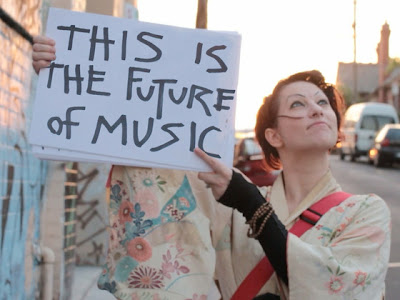
Ten. Years.
Yes, this is the tenth anniversary of this blog – or blogiversary, if you prefer.
The question “What is the oldest science blog?” comes up occasionally in the science online community. It’s hard to pinpoint which it might be. There are people who started doing similar things on their own webpages with regular updates (Daniel Fischer
started in 1996). But no matter how you slice it, this is one of the oldest science blogs, in continuous operation throughout. As far as I’ve been able to find,
Derek Lowe started in February 2002;
Razib Khan started in April 2002, and I started in May 2002. This predates the entry of a few other well-known bloggers, like
Bora Zivcovic in 2004, and I
think PZ Myers.
A quick retrospective.
First, this blog is all
Neil Gaiman’s fault. In late 2001, he was blogging about writing and promoting
American Gods, and that introduced me to the idea that blogging was its own thing. And because of him, I ferreted out Blogger and started to learn how it worked.
I was in the midst of my first year in this job, and this seemed to me to be a good way to document and explain what I do as a researcher. A few people read it here and there, particularly some of my colleagues, who would check out my bitching about our eternally broken ice machine.
Conveniently, the story of this blog divides neatly into two 5 year periods.
Late in 2007, I started to get “born again hard” about blogging. There were a few things that did this.
First, I was conscious that other people had figured out science blogging better than I had and were having more success at it than me. (Yes, I am sometimes driven by jealousy. I am not proud of this, but there you have it.) I wanted to be one of the cool kids. I thought, “I can do more.”
Second, a couple of controversies regarding the teaching of evolution blew up in Texas. There was the dismissal of
Chris Comer, the
Institute for Creation Research trying to accreditation to give master of science degrees, and the
Texas Higher Education Coordinating board review of the K-12 teaching standards gave me huge amounts of blog fodder, which has continued to today. (Oh look, the entire State Board of Education is
up for re-election because of redistricting! This could be interesting...)
Third, I got
Marmorkrebs in my lab. Initially, I though about not mentioning I had these amazing crayfish to people until I was able to get some papers out, because I was nervous about getting scooped. But then I thought about
Seth Godin’s advice:
Ideas that spread, win.
I not only started the
Marmorkrebs blog, but I started to push myself much harder. I wanted to see how far I could take blogging. More science, more often, more effort, better writing (I hoped!), and less whinging.
Things I’m proud of so far? There’s some obvious things, like having a
piece make it into
Open Lab 2009. But there are some you might not expect.
I’m proud that this blog hasn’t moved around much. There were a couple of URL changes in the early days, but that’s been about it. A lot of other science blogs have gone through two or three major regenerations at different hosts, different networks, and the like. It’s been faithfully powered by Blogger for all ten years.
I’m proud that this blog is independent. I’ve never been part of any blogging network. Even more importantly to me, I’ve never had ads on this blog.
Now, onward to decade number two!
P.S.—If you have found this blog useful, or want to give a blogiversary present, a buck towards
my #SciFund project would be greatly appreciated. Thank you.
Photo by mmatins on Flickr; used under a Creative Commons license.
 The current round of #SciFund ends today.
The current round of #SciFund ends today.






























